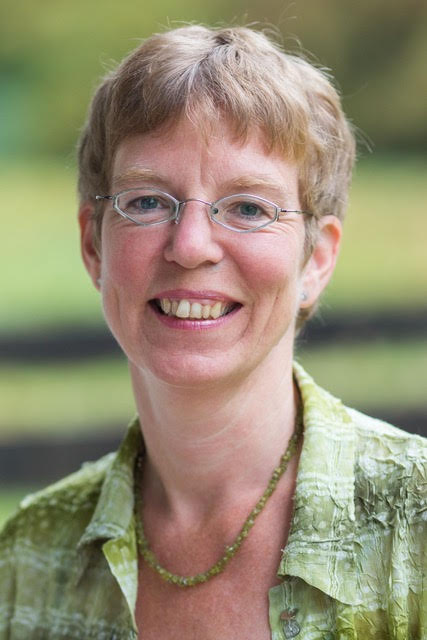By Gertraud Wegst and Dorothee Bornath
Part 1 of this series is here and Part 2 is here.
In many organizations, the longing for wholeness, more appreciation, a sense of purpose, and—at least to some extent—self-management is noticeable, even in those organizations that are not aware of the Teal or Reinventing Organizations context.
Appreciative Inquiry is a value-oriented change and development process that starts to create and is based on creating, a safe space in which people feel seen and appreciated as whole human beings. On this basis, they are able to contribute fully, listen into their shared purpose, and create the desired future in a more and more self-managed way.
All three Teal breakthroughs of Wholeness, Evolutionary Purpose and Self-Management are so to say in-built qualities in the AI processes. And since it is a neutral process, any topic, also the breakthroughs themselves, can be addressed. In AI any chosen topic is called a “core-theme.”
The process in which the power and energy of appreciation and the three breakthroughs unfold is the so-called “4-D-Cycle”. It is the script for change:
- Discovery: Exploring and understanding what is working well and where the potentials can be found —corresponding with Teal pillar: Wholeness
- Dream: Inventing and designing how it could be at best, if all potentials are activated—corresponding with Teal pillars: Wholeness & Evolutionary Purpose
- Design: Designing a bridge into the desired future—corresponding with Teal pillar: Evolutionary Purpose
- Destiny: Realizing the desired future in a sustainable way—corresponding with Teal pillar: Self-Management
Now here in Part 3 of this series, we are going to explain more about phases three and four.
Design: Designing a bridge into the desired future
Main corresponding Teal pillar: Evolutionary Purpose
Now we have the basis and the inspiration of the envisioned future. In the next step participants will precisely formulate as an outline what is to be built—like an architect who creates a blueprint for the house from the builder’s dreams and ideas.
For every core theme, so-called “future statements” get formulated which express the power of the visions—what shall be—in a clear way. The future statements are more and more specified and concretized till they build a viable bridge—from the existing potentials to the shared future – and have a real “suction force”.
The focus lies on the simple question “What will be?”
Good Future Statements are:
- provocative – challenging and go clearly beyond what has been achieved so far
- “grounded” – since traceable examples from the past show that it is possible
- affirmatively formulated – they describe what will be rather than what should not be
- expressive – they have the power of attraction
- motivating – they represent an attractive future
- formulated in present tense – this supports our brain’s realization power.
Future statements describe the ideal, stimulate creativity, and question the existing patterns and assumptions. They are, so to say, the “blueprint” for the desired future. They are not engraved in stone but evolve over time.
Here are some examples for impactful real Future Statements:
– Everybody is taking 100% responsibility for the desired outcome.
– Fairness and respect are waking up our potentials.
– Everybody is freely and gladly contributing to the whole and everything gets done.
– Free, inspired and focused – the future is happening
– Accept, appreciate, trust, act … and celebrate.
– Embrace Unity – Be Love! Now!
These sentences need to inspire the creators but they often also inspire outsiders or other teams of the organization. Especially those who have witnessed the process: they stay connected with the energy of the desired future and the designed plan for the “shared house”. The future statement evolves from the process and is rooted in the intense experience and the positive memories the process brings up. Inspired by these powerful and purposeful statements, more descriptive provocative propositions will specify in more detail what will be.
The future and thus the purpose for any core theme become concrete and tangible in the Design Phase. The orientation gets described even more clearly and distinctly. The future thus gets anchored in reality as having already begun and is ready at hand for the implementation of good next steps.
Appreciative Inquiry can be used for various purposes, and all future-statements can be seen as the purpose for the core themes. For start-ups it is ideal for creating the purpose of an organization itself, creating a powerful and inspiring foundation for everyone. But even organizations with a long-established purpose use this process to revise and adjust their purpose in a sensitive and appreciative way.
These powerful statements over and over again bring back to memory in a pithy and inspiring way what the work, even the whole organization, is about, and what all are standing for.
Destiny – Realizing the desired future in a sustainable way
Main corresponding Teal pillar: Self-Management
Now, on the wings of inspiration from the first three phases, the way in which the visions and future statements get realized will be planned. Next steps and procedures are generated. But: Destiny in the realm of AI is a lot more than the “business as usual” way and what might be called normal “who does what, with whom, by when”.
Here a frame gets created in which the best becomes possible, in which the organization, the team, and the individual person unfold their potential, while at the same time starting to fulfill on their desired future.
In this phase it is about the realization of the visions, supported by the inspiration of the powerful future statements, with persistence in the “appreciative spirit” of wholeness.
The implementation or realization in terms of AI means culture change. With the thrust of the future statements, concrete agreements, plans and operative (project) structures get designed that enable participants to act out of the inspiration of the “already fulfilled” in their everyday lives. This goes far beyond reaching and “checking off” of goals.
At best, Destiny is an ongoing adaptive—evolutionary—process that is continued with the motivation of the shared experience and that unfolds over time.
Inquiring into the concrete future
In a first step of the Destiny phase, what it means to live the future statements and what is needed for that are captured concretely.
Useful questions:
- Where is the dream already alive?
- By what can the vision come to life?
- What creates the essential energy for that?
- What brings joy and excitement?
Furthermore, together, operative project structures get created out of the future statements.
Questions that have the potential to lead there are:
- What does the process so far mean for my own behaviour?
- What are we exactly doing then?
- Where exactly can we move something and with what procedures?
- What structures do we need for that?
- What strategic course do we need to set for this?
- What feedback loops keep us on track?
- How do we support and strengthen one another?
- What new affirmatively-formulated measures do we introduce to consequently focus on our successes and what we achieved?
- How do we appreciate and celebrate our successes while also shining an appreciative light on what didn’t work as we would have liked it to?
Structures that support “staying tuned” get created and implemented, and people take on responsibility for roles that got designed during the process. To open up the process into the organization, procedures and achieved results of the process need to get communicated transparently into the organization.
An ongoing evolutionary process
If an organization has embraced all four phases and gone through them in the described way, it will have established appreciative structures, processes, sequences, meeting forms, feedback loops etc. that nourish a new purposeful culture in the organization. Any phase can be revisited in an evolutionary way, and organizations tend to “know” when it is time for a whole new AI cycle. Especially Destiny as the outcome of the whole process has a life of its own and is meant as an ongoing iterative process. It is all about learning, and going through an Appreciative Inquiry process enables people and systems to make use of the practices provided. Thus in an iterative way an appreciative culture will be built.
Destiny is executed on the wings of inspiration. It looks at the outcome and creates processes, procedures, and structures serving this inspiring future and new positive measures to support the journey. Trust, responsibility, and information flow are ensured from the beginning.
In Destiny, it becomes obvious that Appreciative Inquiry always serves self-management to the extent the framework that was set in the Define Phase allows. So whatever the scope of the system that has been decided upon, participation and extended aspects of self-management are the foundation of the process. Self-management itself can also be the purpose of an AI process. And AI is one of the best ways to actually create an appreciative self-managed organization on the basis of appreciation, which through the Destiny phase is able to keep the inspiration of the processes alive in everyday work.
Conclusion
At best Appreciative Inquiry is an ongoing evolutionary process; In reaching for the desired future, the power of existing resources will be drawn from over and over again.
The result is a new sustainable, appreciative way of being and working together, aligned in a shared purpose and with more and more structures that support self-management.
References:
Appreciative Inquiry Handbook, David L. Cooperrider, Diana Whitney, Jacqueline M. Stavros, Publisher: Crown Custom Publishing, Inc.
Reinventing Organizations, Frederic Laloux
 Gertraud Wegst Appreciative Inquiry practitioner + trainer, Master Coach and coaching trainer, contributor to Reinventing Organizations Wiki and Teal for Startups group.
Gertraud Wegst Appreciative Inquiry practitioner + trainer, Master Coach and coaching trainer, contributor to Reinventing Organizations Wiki and Teal for Startups group.
Led a dietetic centre for binge eaters, 4 nursing homes with 600 tenants with staff from more than 10 different countries and was Practice Leader Germany of an international management consulting firm. Lead Link of Die Wertschätzer E-mail gertraud.wegst@

Dorothee Bornath Holacracy practitioner + Sociocracy training, Coach, Appreciative Inquiry practitioner + trainer and facilitator of large group interventions in organisations and public participation. Created together with Gertraud and other colleagues Die Wertschätzer (The Appreciators) – Coaching, Training, Consulting – with an AI process. Role of Organization Evolution in Die Wertschätzer E-Mail dorothee.bornath@




